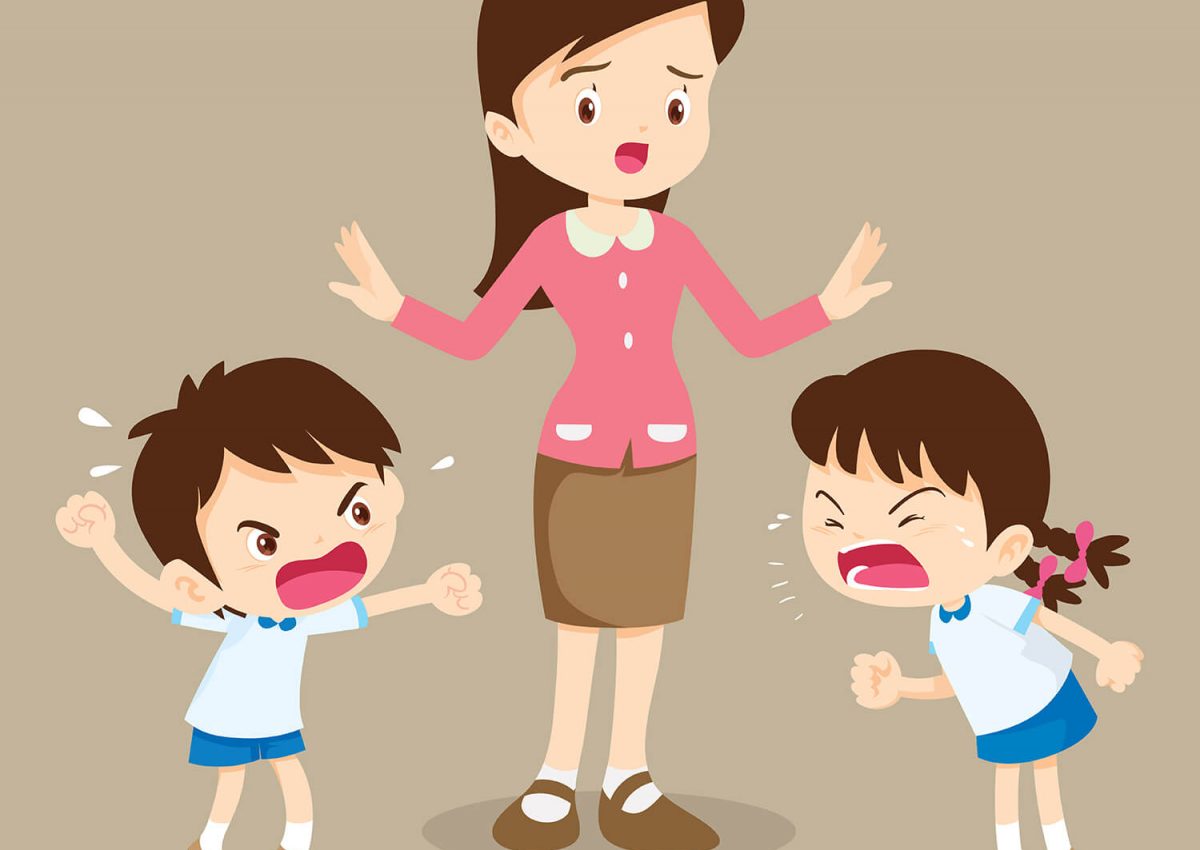
Shreya was only 5 years old when she first encountered bullying. As the bully was someone with whom she had a central relationship in her life, her sibling, the line between sibling rivalry and bullying wasn’t very well defined. Her mom, in fact, kept hoping that it would get better and never really did anything concrete that could help Shreya. The result, at 20 years of age, today, Shreya has spent the better part of her life contending with anxiety and depression. This isn’t an uncommon story at all. Research points out that the risk of bullying, in fact, increases for kids who have more than one sibling.

When does sibling conflict become bullying?
The very first step that parents need to take, is to identify when regular sibling conflict becomes sibling bullying. The important thing to note is that while sibling rivalry happens both ways, sibling bullying is a one-way street. It is repetitive; it is done intentionally and at its worst can be extremely intimidating. Unlike regular sibling rivalry, the bully clearly knows that what he or she is doing is hurtful. That doesn’t, however, stop them from doing it.
Here is what you can do as a parent:
Having identified that it is indeed bullying behavior, do not assume that it is just a phase and will disappear on its own. If you see a child hitting, pushing, or name-calling the other, it is imperative that you intervene and tell them that this behavior will not be tolerated. Instead, teach them to treat each other with respect.
Hold the bully responsible
It is important that you make the bully realize how his actions are hurtful. To ensure that the child has understood this, ask him or her to explain what they have done wrong. That done, ensure you implement appropriate consequences that are commensurate to the action. The consequences could range from taking away privileges to grounding the child. The idea is for the child to understand that what he or she has done isn’t acceptable.
Instill empathy and respect
It is important that you instill empathy and work on the child’s emotional intelligence skills. Those more than anything else will help the child respect others and put an end to bad behavior. Also do ensure that you are instilling the right problem-solving skills so that the child doesn’t resort to unhealthy ways of dealing with issues.
Ensure the child isn’t jealous
Bullying can sometimes result in jealousy between children. Do introspect and see if the child perceives that the other child is unduly favored. Ensure that you do not indulge in comparisons or labeling children. If the child’s self-esteem needs are being met, the odds of the child resorting to bullying will decrease.
Make use of coachable moments
There can be enough and more coachable moments when you can talk to the child about how situations can be better handled. For example, if you see siblings fighting amongst themselves or witness someone bullying another, it is worthwhile to discuss how the behavior would have impacted the other person and how the situation could have been handled in a manner that would have been more kind. Similarly, ensure that your own behavior can be something that the kids can look up to. Slamming doors, name-calling, and yelling when you are angry and upset, only passes the message to the child that these are regular coping skills to resort to. On the other hand, setting family rules, which include using kind words, and being caring and helpful, lays the right foundation for the children. Similarly reinforcing positive behavior through praise and positive comments will motivate the child to continue the behavior.
Keep a check
Having called out the child for bullying or having had him face consequences once, do not assume that the bullying will go away. Instead, monitor the behavior and be firm and consistent. Also, remember to watch out for subtle changes in behavior in the victim. Children, for example, may isolate themselves as a way to shut down the pain. They may also stop participating in activities they normally loved. All of these can be signs. As suggested by Footprints Preschool Ensure you talk to the child and give him or her the confidence to share what is bothering them. Once you have the facts, do your best to support the child!
Remember that the idea isn’t to take away conflict totally from a sibling relationship. Some amount of conflict, in fact, is healthy. You need to ensure however that the line between conflict and bullying is never blurred!

Amita is an experienced educator with over 30 years of experience. She has an outstanding understanding of child development, having worked with various age groups for prestigious businesses. She has been dedicated to handling Footprints’s Curriculum and Delivery department for the past decade. Amita’s credentials include being one of India’s few HighScope Curriculum certified trainers and volunteering as a course leader for Landmark Education, the world’s largest training firm.

